Unfortunately, unless you’re Richard Branson or a card-carrying member of NASA, it’s not looking good that you’ll be able to vacation on another planet anytime soon. Instead of mourning the fact that you’ll likely never wander the terrain of Mars or Jupiter, I have 15 suggestions for bizarrely beautiful otherworldly travel destinations right here on planet Earth.
Contents
- Red Beach (Panjin, China)
- Pamukkale (Turkey)
- Osoyoos Spotted Lake (British Columbia)
- Plitvice Lake (Croatia)
- Goblin Valley (Utah)
- Salar de Uyuni (Bolivia)
- The Wave (Arizona)
- Socotra Island (Yemen)
- Mount Sanqingshan (Jiangxi Province, China)
- Hell’s Door (Turkmenistan)
- Crystal Cave (Naica, Mexico)
- Canos Cristales (Colombia)
- The Giant Causeway (Ireland)
- Rio Tinto (Spain)
- Jellyfish Lake (Palau)
Red Beach (Panjin, China)
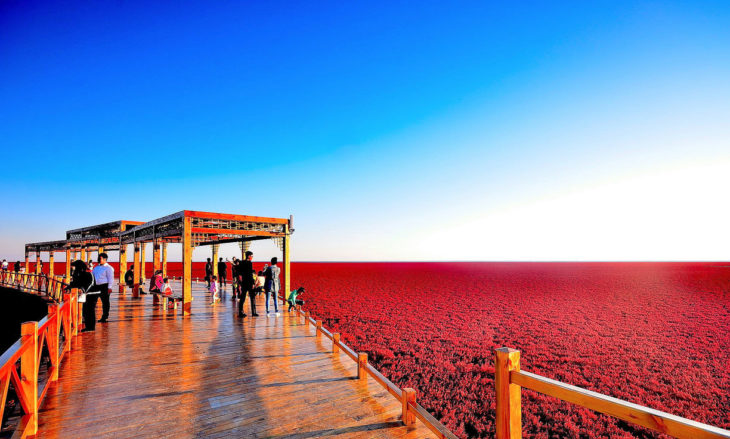
Source: trover
Red Beach gets its name from the type of seaweed that grows there and thrives in the saline-alkali- heavy soil. Starting in April/May, the seaweed is green but come fall, it changes to a deep red hue, giving the beach this amazing red velvet look. [Amusing Planet]
Pamukkale (Turkey)

Source: faena
Holy Hot Springs! This majorly beautiful tourist destination — the name translates to “cotton castle” — is beloved for its terrace-like thermal pools, and is the site of the ancient city of Hierapolis. [Kuriositas]
Osoyoos Spotted Lake (British Columbia)
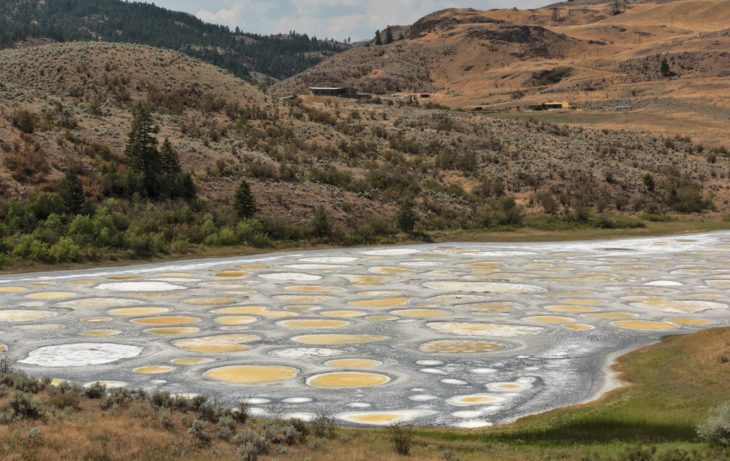
Source: mnn
Osoyoos is one of the most mineral-rich bodies of water on Earth, which has earned it the nickname “The Healing Spotted Lake.” During the summer, the lake’s water evaporates, leaving behind the pooling minerals – mostly sulfates of magnesium, calcium and sodium. The color of each pool varies, depending on the type and concentration of each mineral. Totally trippy. [Oddity Central]
Plitvice Lake (Croatia)
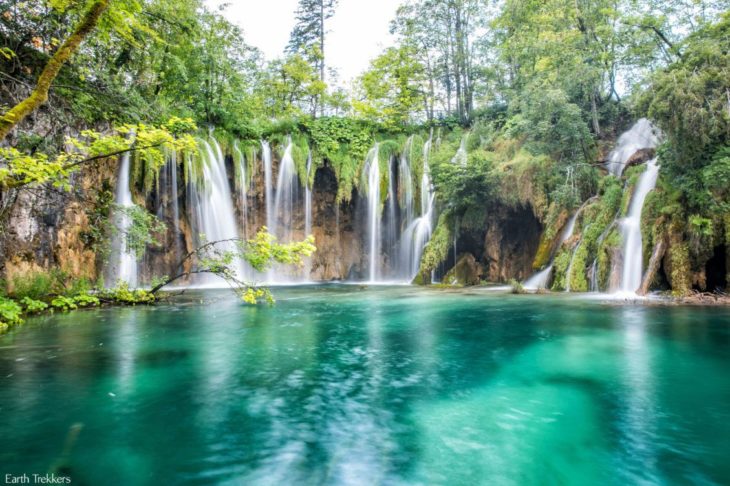
Source: theblondeabroad
Croatia is already on my list of dream travel destinations (along with Nicaragua and Barcelona), but after seeing pictures of Plitvice Lakes National Park — the oldest in Southeastern Europe — I must make going a priority. Plitvice is known for it’s cascading lakes, 16 of which can be seen above ground and are all interconnected and follow the water flow. They are separated by natural dams of travertine. I want – nay, need – to go to there. [Wikipedia]
Goblin Valley (Utah)
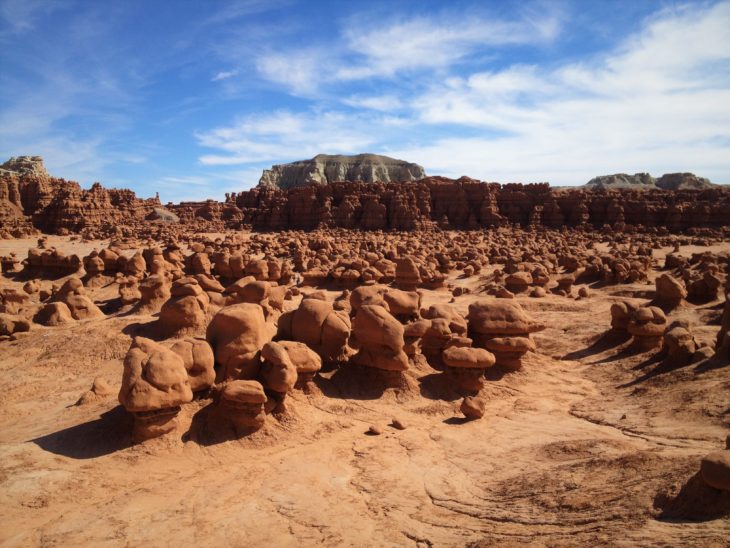
Source: tipsforfamilytrips
Utah has never really been on my list of places I’m dying to visit, but upon seeing photos of Goblin Valley National Park, a roadtrip might be in my future. The thousands of mushroom-shaped rocks called hoodoos look straight out of a Timothy Leary acid trip. [Wikipedia]
Salar de Uyuni (Bolivia)
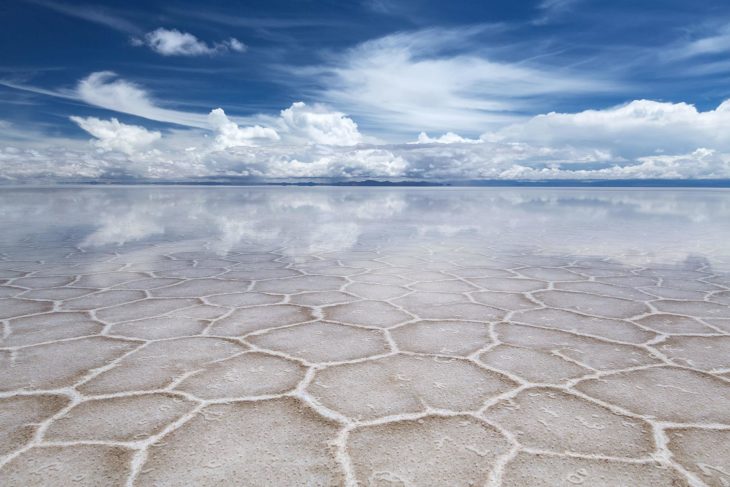
Source: fodors
Salar de Uyuni is the world’s largest salt bar, its thick crust covering a layer of brine and, get this, lithium. Which I would need if I went there because Salar de Uyuni also happens to be a breeding ground for several species of flamingos. [Wikipedia]
The Wave (Arizona)

Source: horseshoebend
I’m straight stupified by the beauty of The Wave’s burnt orange color gradience, which comes as the result of serious erosion to the Navajo Sandstone thanks to water and wind. (That’s a very, very, very simplistic explanation of course.) And depending on the time of day, the light has a profound effect on how The Wave’s troughs look, making it a must-visit destination for any budding photographers. [Wikipedia]
Socotra Island (Yemen)
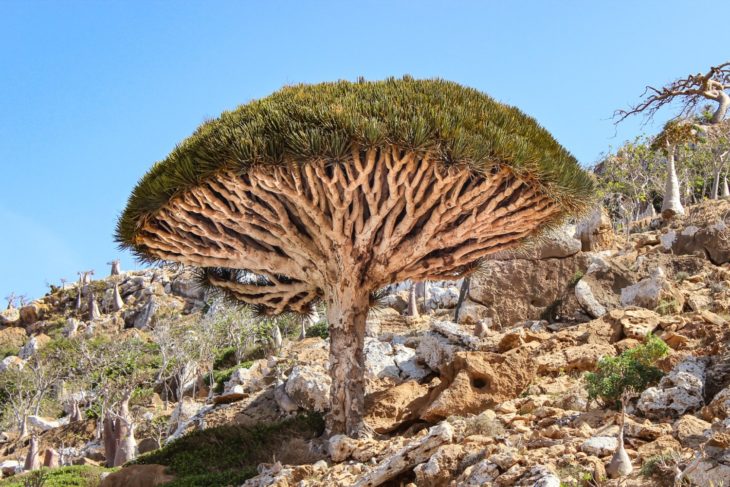
Source: adventuresoflilnicki
Socotra Island in Yemen looks like it could have stepped out of the pages of a Dr. Seuss book, with its incredibly unique variety of plant life (a third of which cannot be found anywhere else on earth) and rare bird species. I would be so down to bask in the shade of the dragon’s blood trees (how very Game of Thrones!). [Atlas Obscura]
Mount Sanqingshan (Jiangxi Province, China)
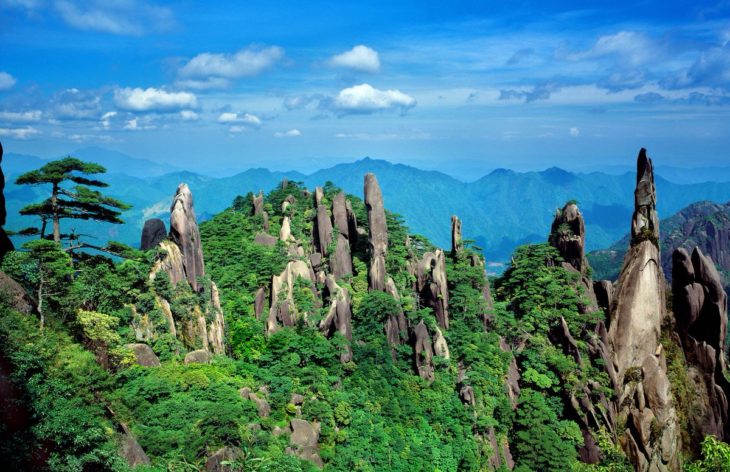
Source: twitter
The coolest thing about this incredibly gorgeous national park is that many of its 48 granite peaks and 89 granite pillars look like human or animal silhouettes. Oh and the “white rainbows,” cascading waterfalls, and lush forests. Yes, please. [Travel China Guide]
Hell’s Door (Turkmenistan)
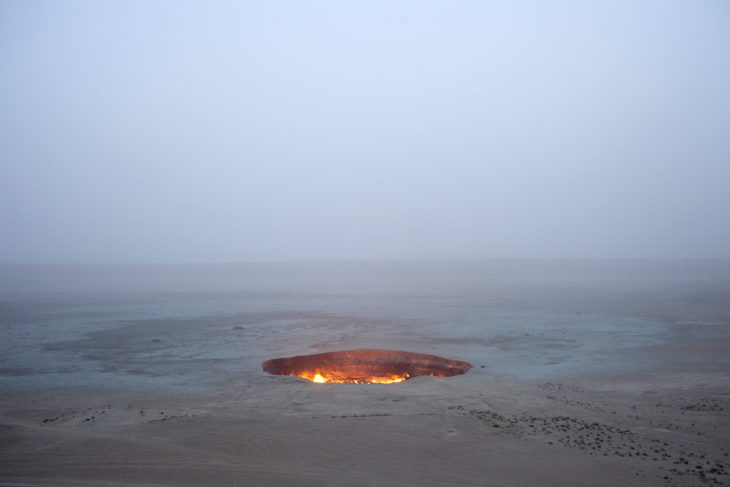
Source: nationalgeographic
If your inner Satanist has a case of wanderlust, head to Derweze in Turkmenistan, also known as “Hell’s Door.” Back in 1971, Soviet geologists were drilling into a cavern filled with natural gas that then collapsed. They decided the best way to handle the poisonous gas discharge was to burn it off, only they grossly underestimated how long it would take. They officially thought the process would take a couple of days — but the massive hole is still burning today. [Wikipedia]
Crystal Cave (Naica, Mexico)
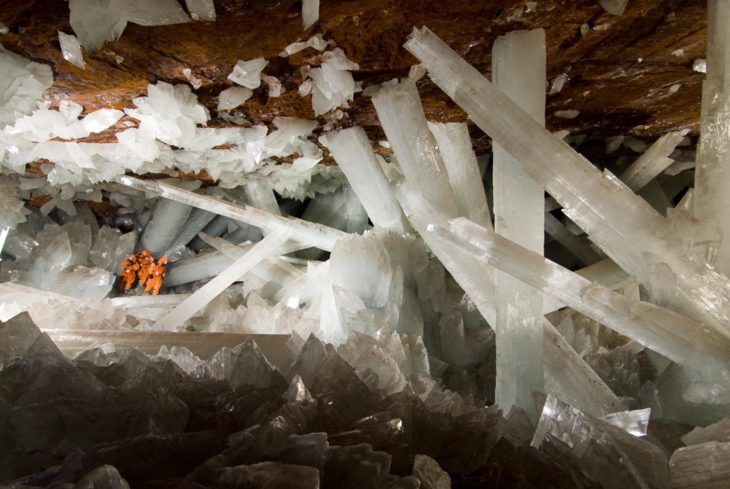
Source: nationalgeographic
For rock nerds, Mexico’s Crystal Cave — which was only discovered in 2000 — is like Mecca. The main chamber contains giant selenite crystals, some of the largest natural crystals ever found. Unfortunately, because we can’t have nice things, exposure to the crystals for longer than 10 minutes it actually really dangerous, so tourists can’t actually visit and climb amongst them as this photo suggests. Sigh. [National Geographic]
Canos Cristales (Colombia)
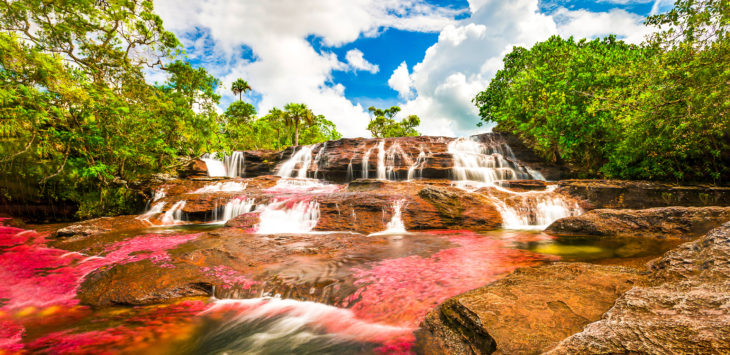
Source: cnn
In this picture, Colombia’s Canos Cristales looks all crimson, but it’s actually nicknamed “The River of Five Colors” thanks to the explosion of hues visible underneath the water for a few weeks between September and November. During that brief period, a plant just underneath the surface called Macarenia clavigera is warmed by the sun and turns the brilliant red you see here, complemented by yellow and green sand and the blue water. Gorgeous. [Amusing Planet]
The Giant Causeway (Ireland)

Source: thegiantscausewaytour
Made up of volcanic rock, the pillared columns of The Giant Causeway were formed over three periods of intense volcanic activity. Probs best not to explore this hot spot if you’ve had more than one pint of Guinness, though. [Discover Northern Ireland]
Rio Tinto (Spain)
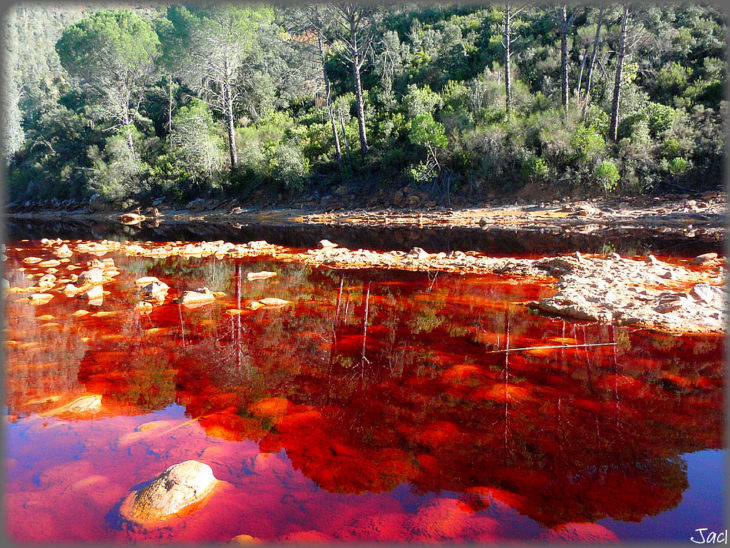
Source: flickr
Spain’s “Red River” gets its menstrual hue thanks to 5,000 years worth of mining for copper, gold, silver and other minerals. I imagine that you wouldn’t want to wear a white swimsuit and go for a soak in the Rio Tinto. [Atlas Obscura]
Jellyfish Lake (Palau)
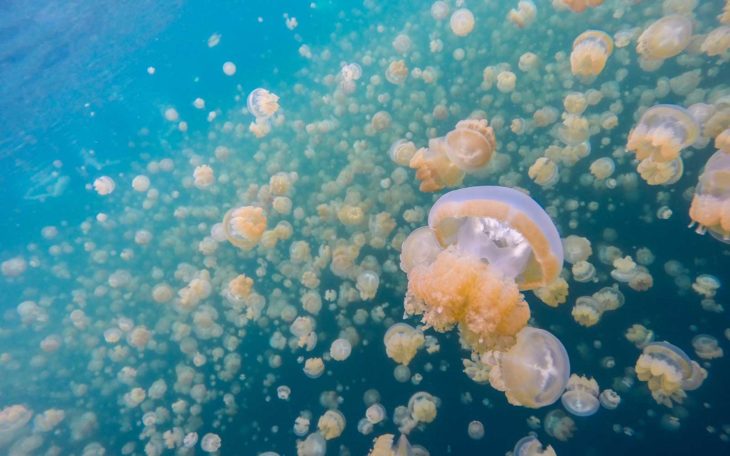
Source: travelandleisure
This isn’t my cup of tea, per se, as I am very squeamish about gelatinous things brushing up against my bare body parts, but if you’re into that sort of thing, Jellyfish Lake in Palau looks like an amazing spectacle. Luckily, the millions of golden jellyfish have led a life of leisure and because they haven’t had to fight off any predators, they’ve lost their sting. [National Geographic]
Original by:
